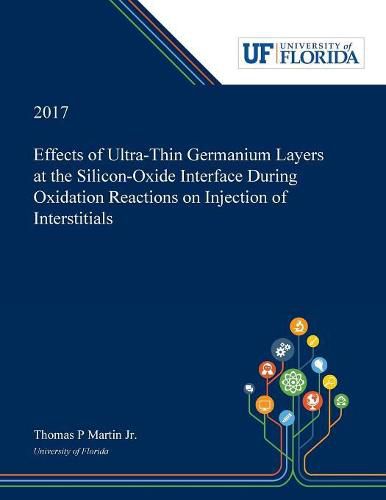Readings Newsletter
Become a Readings Member to make your shopping experience even easier.
Sign in or sign up for free!
You’re not far away from qualifying for FREE standard shipping within Australia
You’ve qualified for FREE standard shipping within Australia
The cart is loading…






Abstract: It is well known that the oxidation of Silicon will inject interstitial atoms into the bulk, causing various effects such as OED and OSF. The presence of Germanium at this oxidizing interface has long been known to suppress this interstitial injection. Previously it was believed that only the top monolayer at the oxidizing interface was responsible for this effect or participated in the reaction, but the effects of monolayer and sub-monolayer Germanium in this region have never been studied. These doses can be introduced through ion implantation and the interstitial injection quantified through bound interstitials captured by buried loops. Results show that partial suppression can be observed for doses as low as 1.7 x1014 cm-2 (0.2 monolayer) but that total suppression requires in excess of 1.4x1015 cm-2 (2 monolayers). This opens up new possibilities in modulating or eliminating the degree of injection through controlling the dose of Germanium using low energy ion implantation. It is also shown that germanium introduced directly at the surface using ultra-low energy 200eV ion implantation shows similar behavior to germanium introduced through higher energy implantations and subsequent condensation.
Dissertation Discovery Company and University of Florida are dedicated to making scholarly works more discoverable and accessible throughout the world. This dissertation, Effects of Ultra-Thin Germanium Layers at the Silicon-Oxide Interface During Oxidation Reactions on Injection of Interstitials by Thomas P Martin Jr., was obtained from University of Florida and is being sold with permission from the author. A digital copy of this work may also be found in the university’s institutional repository, IR@UF. The content of this dissertation has not been altered in any way. We have altered the formatting in order to facilitate the ease of printing and reading of the dissertation.
$9.00 standard shipping within Australia
FREE standard shipping within Australia for orders over $100.00
Express & International shipping calculated at checkout
Abstract: It is well known that the oxidation of Silicon will inject interstitial atoms into the bulk, causing various effects such as OED and OSF. The presence of Germanium at this oxidizing interface has long been known to suppress this interstitial injection. Previously it was believed that only the top monolayer at the oxidizing interface was responsible for this effect or participated in the reaction, but the effects of monolayer and sub-monolayer Germanium in this region have never been studied. These doses can be introduced through ion implantation and the interstitial injection quantified through bound interstitials captured by buried loops. Results show that partial suppression can be observed for doses as low as 1.7 x1014 cm-2 (0.2 monolayer) but that total suppression requires in excess of 1.4x1015 cm-2 (2 monolayers). This opens up new possibilities in modulating or eliminating the degree of injection through controlling the dose of Germanium using low energy ion implantation. It is also shown that germanium introduced directly at the surface using ultra-low energy 200eV ion implantation shows similar behavior to germanium introduced through higher energy implantations and subsequent condensation.
Dissertation Discovery Company and University of Florida are dedicated to making scholarly works more discoverable and accessible throughout the world. This dissertation, Effects of Ultra-Thin Germanium Layers at the Silicon-Oxide Interface During Oxidation Reactions on Injection of Interstitials by Thomas P Martin Jr., was obtained from University of Florida and is being sold with permission from the author. A digital copy of this work may also be found in the university’s institutional repository, IR@UF. The content of this dissertation has not been altered in any way. We have altered the formatting in order to facilitate the ease of printing and reading of the dissertation.